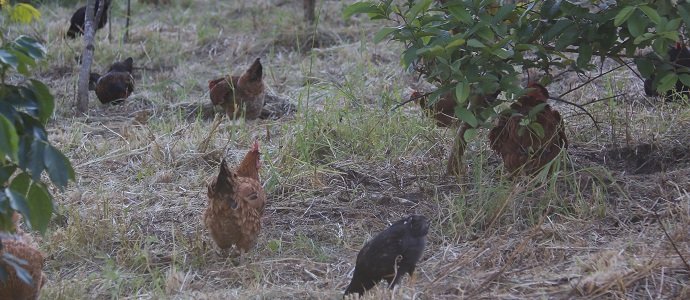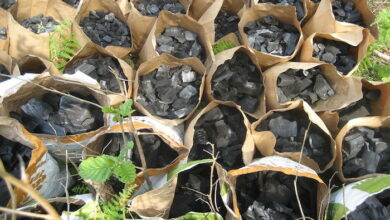
The delicious and low cholesterol containing meat which is accepted by almost all societies is the key to bringing an excellent boost to the poultry industry. The poultry industry, one of the largest and fastest growing agro-based industries, is not only providing a huge amount of animal protein but also producing millions of tons of waste materials whose proper utilization can bring a great economic and environmental advantage. Having numerous beneficial potentialities, in many cases poultry litter and manure are being used inappropriately and causing many economic and environmental hazards. In this article focus has been given to the numerous benefits of poultry wastes and their proper management to use them as organic manures. If you can manage it properly then poultry litter is capable of providing everything that you may need for an improved and healthy crop production.
Poultry litter
Poultry manure or chicken manure is the organic waste from poultry composed of mainly feces and urine of chickens. The mixture of poultry manure with spilled feed, feathers and bedding materials like wood shavings or sawdust is referred as poultry litter. Poultry litter is an organic manure enriched with many major plant nutrients like N, P, K and many trace elements like Zn, Cu, As etc. The composition and quality of a poultry litter varies with the types of poultry, types of litter used, diet and dietary supplements, and collection and storage of the litter.
Use of Poultry Litter
As a Very Good Fertilizer
Poultry litter is a rich fertilizer with a great number of nutrients essential for plant growth and has been used as organic fertilizer for centuries. It contains a high amount of major nutrients especially N, P, and K. Trace nutrients like Cu, Zn, As etc. are also present in this manure. Bird feces largely add all these nutrients to poultry manure. The manure release nutrients to the soil for plant uptake upon their decomposition in the soil. Poultry litter manure is found to give very good crop productions in various experiments. For instance, corn yields were obtained higher in a number of studies due to the application of poultry manure. Fertilizer studies with cotton in the U.S. showed that poultry litter is a valuable source of plant nutrients supplying N and metals Fe, Cu, Zn and Mn (Tewolde et al., 2005). It is locally readily available fertilizer at a low cost and can be very useful in reducing vegetable production cost.
As an Effective Soil Amendment
Excessive application of chemical fertilizers and continuous cultivation of the same crop in the particular field cause deterioration in soil structure and overall soil quality. Different experiments showed that addition of poultry manure and litter improves many vital properties of soils. Poultry manure has been found to decrease the bulk density and to increase the water holding capacity, organic matter content, oxygen diffusion rate, and aggregate stability of the soils.

When poultry litter is used as a mulching material, it conserves soil moisture and save the surface feeding roots from drying out in the summer heat. Poultry manure is capable of improving the biological fertility of mine tailings. Poultry litter is increasingly being used in the rehabilitation of disturbed land resulting from mining and other industrial activities (Franzluebbers and Doraiswamy, 2007).
As a Very Good Animal Feed
Poultry manure or litter can be used as feed for cattle and fish. To use the litter as feed the foreign materials in it like plastic, feather, glass etc. must be removed. Poultry litter with ash content more than 28% is not safe to be used as feed, so low ash content must be maintained. Unprocessed poultry litter contains pathogenic microorganisms like Clostridium, Salmonella and Enterobacter spp.; and feed additives, which are added in poultry diet and can be present in the litter as waste by-products, such as antibiotics, coccidiostats, and arsenicals. Therefore to use as feed, proper processing is a must to eliminate these substances from the litter. Properly processed poultry manure and litter are enriched with protein, minerals and fiber and have been mixed with cattle feed for these nutrients. In U.S., they have been used as a useful feed ingredient for around 40 years.
As a Good Fuel Source
Poultry litter can be used as a great source of fuel. Poultry litter with moisture content less than 15% can be burnt directly as fuel to generate heat energy. Biogas, a very useful combustible gas with around 60% methane, can be produced by anaerobic digestion of poultry waste. Biogas, produced by poultry litter, can be used for various purposes including fuel for engines, to produce electricity, to produce heat by simply burning and so on. Many states in U.S. are producing a huge amount of turkey and broiler waste to use those as renewable green sources to produce electricity.
Other Uses
Using properly processed poultry litter for various purposes brings some other advantages-
• Reduces the quantity of useless wastes which needs to be disposed
• Reduces odor problems
• Proper using of litter protects the groundwater from potential litter contamination
• Create an income source for the people involved in litter processing
• Kills harmful microbes, flies and weed seeds present in the litter
• Produce energy from waste.
How to use Poultry Litter
Composting
Using fresh poultry litter is not safe as it contains many pathogenic organisms, harmful chemicals, and weed seeds; therefore, composting is necessary to use them as fertilizer.To compost, fresh chicken manure should be mixed with different ratios of Carbon source. The Carbon source is also needed to be a bulking agent that facilitates the aeration of the compost pile. The pile temperature should be maintained between 55 and 65°C for minimum 2 weeks.

Turning the pile regularly is needed to homogenize the pile. Turning and maintaining pasteurizing heat (55-65°C) for 2 weeks kills all weeds and pathogens and gives compost which is not properly mature. The compost thus results is not stable and emits strong odor but still that is good fertilizer with no weeds and pathogens.
Some special cares are needed to produce good quality litter compost-
• To avoid leaching and potential groundwater contamination, composting should be done on an impermeable base.
• An elevated area or a building should be used for composting to deter extraneous runoff entering the compost pile.
• To prevent nutrient leaching and contamination, the compost pile is needed to be secured from rain.
• To avoid emitting odorous gasses, the pile should be protected from the wind.
• Maintaining optimum moisture content is useful to avoid dust and odor emission. When the pile is too dry, excessive dust may be produced and when the pile is too wet, an excessive odor is emitted. Maintaining moisture content around 50-55% is the best way avoiding these.
Land Application
Some strategies must be followed to apply poultry litter as a fertilizer-
• Poultry compost works best during the active growth of the plants or immediately before planting, that’s that should be added at that time. Application of poultry litter during fall or winter is not a good choice, as crops cannot properly utilize the nutrients at that time.
• Timing of application of poultry litter should be determined on the basis of maximizing crop recovery of nutrients.
• Poultry litter application should be done on the basis of balanced nutrient requirements of the crops.
• To avoid gaseous losses of N and runoff losses of other nutrients, poultry litter should be incorporated into the soil.
Environmental Monitoring
To ensure sustainable production and healthy environment, environmental monitoring is a vital component of a balanced poultry litter management practice. Regular analysis of manure samples, soil and drainage water sampling and their subsequent analysis for contaminants and nutrients content, maintaining records of all farm activities are the important parts of environmental monitoring for poultry manure application.
References
TEWOLDE, H., SISTANI, K.R. and ROWE, D.E. (2005). Broiler litter as a micronutrient source for cotton: concentrations in plant parts. Journal of Environmental Quality 34: 1697-706.
FRANZLUEBBERS, A.J. and DORAISWAMY, P.C. (2007). Carbon sequestration and land degradation. Climate and land degradation in: International Workshop on Climate and Land Degradation: 343-358 (Arusha, Tanzania).












